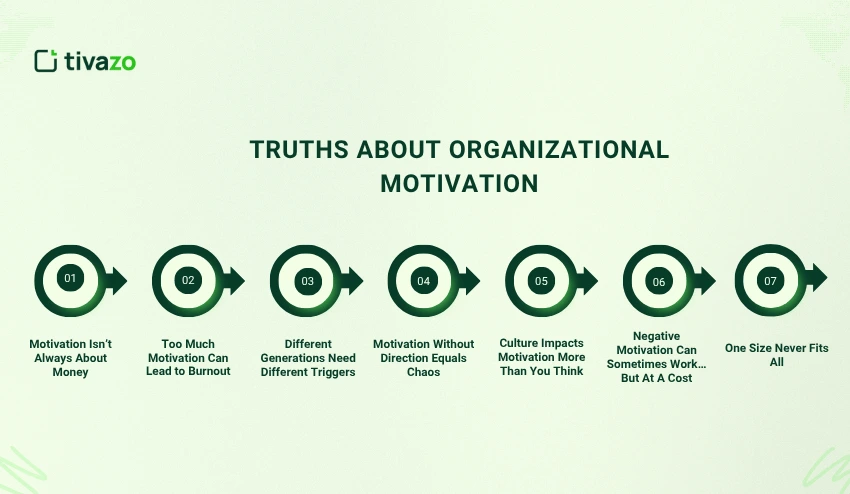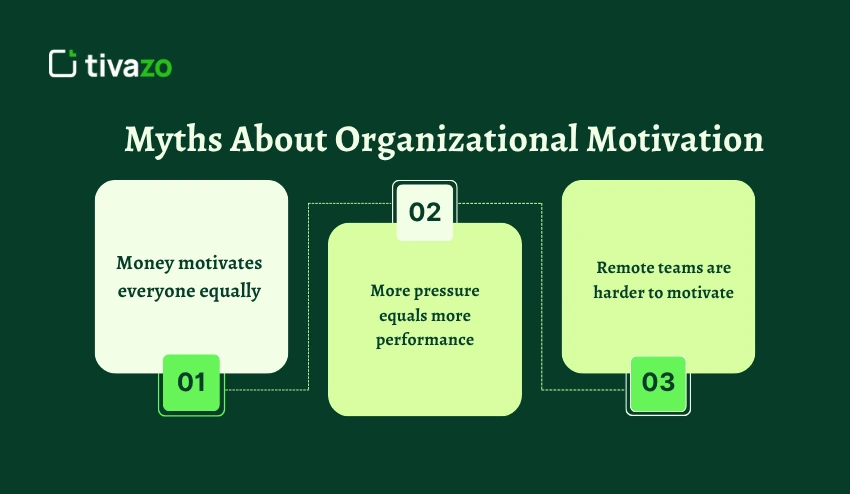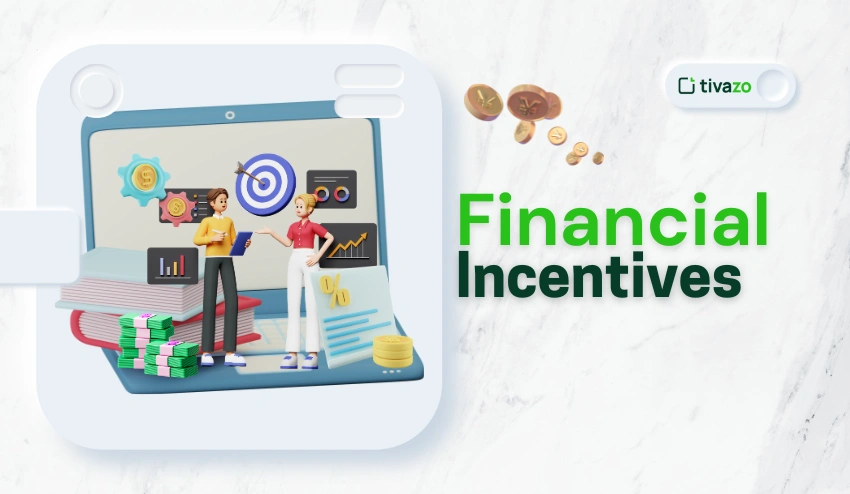Organizational motivation is commonly discussed, whether at corporate meetings, HR departments, or leadership retreats—but rarely understood in detail. Everyone agrees that a motivated workforce is a more productive, innovative, and committed workforce. But what if we told you it can backfire? That in some extreme cases, the systems in place to support morale, can actually drain morale?
This blog articulates 7 shocking truths about organizational motivation that few leaders take notice of From generations specific stimuli, to how motivation is causing your team to burn out, we will explore what is working, what is not working, and what to do about it.
Whether you are an entrepreneur, HR manager or team leader, this exploration will show you the actual power of motivation and the unseen traps of motivation.
Understanding the Role of Motivation in Organizations
Motivation is not just a soft skill or popular term, it is the fundamental energy that powers all aspects of a successful business. Motivation affects employee productivity, job satisfaction, retention rates, and even innovation and creativity levels within an organization. Motivation fundamentally has two categories, intrinsic motivation (to be motivated by rewarding internal factors like passion, purpose, autonomy) and extrinsic motivation (to be motivated by external factors like bonuses, promotions, and recognition). Much of the time organizations only think of extrinsic motivators instead of the fact that we usually need a balance of both extrinsic and intrinsic motivators to achieve true, lasting motivation.

- Employee productivity
- Job satisfaction
- Retention and turnover
- Innovation and creativity
At its core, motivation can be classified into two types:
- Intrinsic Motivation – Driven by internal rewards (passion, purpose, autonomy)
- Extrinsic Motivation – Driven by external rewards (bonuses, promotions, recognition)
Most organizations heavily lean toward extrinsic motivators. But as you’ll see below, that’s only part of the story.
The 7 Shocking Truths About Organizational Motivation

1. Motivation Isn’t Always About Money
Motivation Isn’t Always Money-Based In corporate culture, one of the most important misconceptions is that people will work harder just because of more money. It’s true that compensation is a first priority – especially in jobs where employees haven’t reached a basic financial stability level-money rarely produces any long-term motivation. There is research to support this notion; such as Daniel Pink’s work that states that once basic financial criteria are met, employees motivations move to deeper aspects of motivation-meaning, master and autonomy.
So, throwing bonuses or raises at people and expecting the problems to disappear usually doesn’t work to address more important issues like a lack of vision, overall poor leadership or a high negative toxicity workplace culture. You will be successful when you combine pay in a competitive manner with meaningful roles that inspire individuals purpose,competence in skillful mastery, and autonomy in decision making.
2. Too Much Motivation Can Lead to Burnout
Motivation is strong, and just like fire, it can warm or destroy. In high-stress, fast-paced environments, demanding more performance from employees can lead to chronic stress, anxiety, and ultimately burnout. Leaders who push for more performance without acknowledging the need for time to rest or recover will create a toxic type of productivity. Employees may work harder and longer but will feel burned out and disengaged.
This can lead to increase in absence related to burnout, lower levels of creativity, and higher rates of employee turnover. Sustainable motivation is the key to productivity. Sustainable motivation means to encourage drive and energy while also fostering time off, rest, and mental health in order to sustain energy and resilience in the workforce.
3. Different Generations Need Different Triggers
Motivation is not a one-size-fits-all approach – especially when your workforce is made up of multiple generations. For example, a Gen Z intern is likely motivated to look for flexibility and social impact, which means they will value workplaces that adhere to their personal values, ideologies, and how they were able to work at their own speed. Millennials are typically motivated by opportunities for growth, regular recognition and a healthy work-life balance. Gen X employees are motivated by stability, autonomy, and leadership opportunities.
Baby Boomers are typically motivated by loyalty, status, and building a legacy. Failing to recognize these generational differences and applying the same motivational tactics universally is likely to leave many employees unmotivated. The most effective leaders design motivational strategies that take into consideration their team’s generational values, experiences, and expectations.
4. Motivation Without Direction Equals Chaos
Energy and enthusiasm are vital, but without clear direction, they can become wasted efforts. A team that’s motivated but lacks a shared vision, defined goals, or clearly assigned roles is like a ship without a rudder—it may be moving, but it won’t reach its destination efficiently. Misaligned motivation leads to confusion, frustration, and ultimately poor performance. When employees don’t know how their work contributes to bigger objectives or when priorities shift without clear communication, motivation can quickly dwindle. To harness motivation effectively, leaders must ensure that individual efforts are aligned with well-communicated organizational goals and key performance indicators, providing a roadmap that channels energy productively.
5. Culture Impacts Motivation More Than You Think
Motivation and enthusiasm matter a lot but they will only waste action if they lack direction. A motivated team without goals, a unifies vision, or shared responsibilities is just like a boat without a rudder; it may be underway, but is not going to get anywhere quickly and it is going to be upsetting in the meantime. Motivation without direction is misalignment that ultimately leads to confusion, frustration, and lousy performance.
Motivation disappears quickly when employees are unaware of how their work is aligned to bigger organizational objectives or when priorities shift without a proper announcement. To properly use motivation, leaders must ensure individual’s actions are in alignment with well-communicated organizational objectives and key performance indicators, and thus provide a clearly laid out path to channel their energy to productive outcomes.
6. Negative Motivation Can Sometimes Work… But At A Cost
Fear-based motivation strategies—threats, deadlines, penalties, and job insecurity—can usually be surprisingly effective, but they have long term consequences. A fear based approach can damage trust, inhibit creativity, and reduce the emotional safety in the workplace. Uber’s former corporate culture is a classic example, one established on competition and fear based pressure tactics for fast initial growth. Although it worked briefly, an abusive fear based culture led to employee dissatisfaction, increased employee turnover, and negative external behaviours including public scandals. Sustainable motivation happens when organizations require accountability, while also exercising empathy—creating a structure for expectations and consequences, but ultimately supporting employees, not intimidating them.
7. One Size Never Fits All
Lastly, it is critical to appreciate that all employees are unique with the preferred approach to recognition as well as strengths and motivational drives. Some will flourish with public recognition, while others take pride and fulfillment in privacy with quiet appreciation. Some perform best in a team and some work best independently. Implementing a one-size-fits-all motivation strategy can dissociate a large segment of your workforce and can hinder their level of engagement and performance.
The best leaders take the time to learn about their teams, such as looking at personality assessments like DISC or MBTI and conducting regular one-on-one conversations with employees and employee feedback surveys. This level of awareness allows them to better motivate participants, while ensuring that an employee feels valued and motivated in a style that works for them.
How to Build a Motivation Strategy That Actually Works
Here’s a practical framework to transform motivation in your organization:
1. Audit the Current State
Before you create change, it is important that you understand where your team is at right now. Knowing your current starting point will help you adjust your approach. Use anonymous surveys, one-on-one interviews, or feedback tools to get a sense of employee morale, engagement levels, and pain points. This is not the time nor place to sugar coat your honest assessment of what is working, what is not working and the gaps around your current motivation efforts. When you know the starting point of where you are, you will have a more accurate and tailored approach.
2. Segment Your Team
Not all employees are motivated by the same things. Segregate your employees in ways that make sense such as job role, personality type, generation, or personal approaches. For example your sales team may want recognition and a commission for their achievements while your creatives may want freedom to come up with ideas and opportunities to grow. If you segment your employees, it will allow you to create approaches that are specific rather than an overall approach.
3. Blend Intrinsic and Extrinsic Motivators
Solely motivating through financial means—like bonuses or pay raises—will take you only so far. To stimulate sustainable motivation, you have to blend extrinsic drivers (such as rewards and promotions) with intrinsic drivers, valued workplace attributes that inspire employees to invest a little more—yes, meaningful work; opportunities for skill development, recognition, and autonomy at work. When employees see their work has meaning and they have the ability to decide how they do their work, their motivation is deeper, and lasts longer.
4. Build a Feedback Loop
Incorporating motivation into your strategy will always be evolving. Regularly checking in by hosting team meetings, or pulse surveys will help reveal how your approaches are working (or not) at driving employee engagement. Create a culture where your employees feel comfortable to voice what motivates them or the obstacles they remove to be motivated. Ongoing feedback loops allow you to identify areas needing adjustment before burnout happens and can take timely action to improve said area.
5. Reassess Every Quarter
Reassess on a Quarterly Basis
The workplace is a dynamic and ever-changing environment, and so are employee needs. Set a quarterly review to measure motivation metrics, collect new feedback, and make adjustments to your approach. What worked for you three months ago may not work for you now. Continuous reassessment will keep your motivation system adaptable, relevant and useful over the long term.
Motivation isn’t a one-time initiative—it’s a system that needs tuning.
Key Metrics to Measure Motivation in Your Team
To manage motivation, you must measure it. Track:
- Employee engagement scores (via surveys)
- Turnover and retention rates
- Absenteeism and burnout patterns
- Peer recognition data
- Productivity metrics before and after changes
Even qualitative feedback can reveal powerful trends.
Common Myths About Organizational Motivation
Let’s bust a few myths:

Myth: Money motivates everyone equally
Many leaders think that if salary or bonus are increased motivation will automatically increase for all employees. It is true that competitive pay is important to fulfill basic need and attract talent, but it is not the primary motivator for most. Once employees achieve basic financial security, research shows that employees are far more motivated by making or contributing to something worthwhile, opportunities to learn and grow, and meaningful work. Employees who see the work they do has worth and there are opportunities for them to grow personally and professionally are simply better employees than those who are only motivated by money.
Myth: More pressure equals more performance
There is still a belief that demanding more of employees, including jeopordizing deadlines, and increasing demands will produce better results. This is not true. Stressors without sufficient support lead to stress, burnout, and a decline in productivity. Sustainable high performance requires a healthy amount of stress. You want employees to be challenged enough to keep them engaged but you also need to allow enough room for rest, reflection, and creativity. Those leaders that built a supported workplace environment that allows people to thrive under pressure usually can achieve success longer than those who rely on stress alone.
Myth: Remote teams are harder to motivate
With the emergence of remote work, some managers believe it will become almost impossible to motivate employees away from the traditional office. In reality, remote teams can be equally as motivated as co-located teams. While motivating remote team members may present some challenges, it is by no means impossible to motivate them.
By providing remote employees structures for setting clear goals, regular follow-ups, opportunities to show appreciation and recognition, and a chance to engage socially with co-workers can make remote workers feel included and appreciated. The challenge isn’t finding ways to motivate remote employees, it’s simply figuring out how to adapt motivational strategies to the virtual landscape, not that distance makes any less motivated.
Final Thoughts – Motivation Is Power, But Only When Managed
Motivation is a force—a force to grow freely or it can be directed and harnessed to create real and lasting power. The shocking truths you learned today taught you that motivation is not just about energy, it’s about direction, personalisation, and alignment.
Motivation can change a business if you get it right; if you ignore it or apply it incorrectly, it will silently destroy your people and your progress.
Take some time to rethink how you energise your team.




